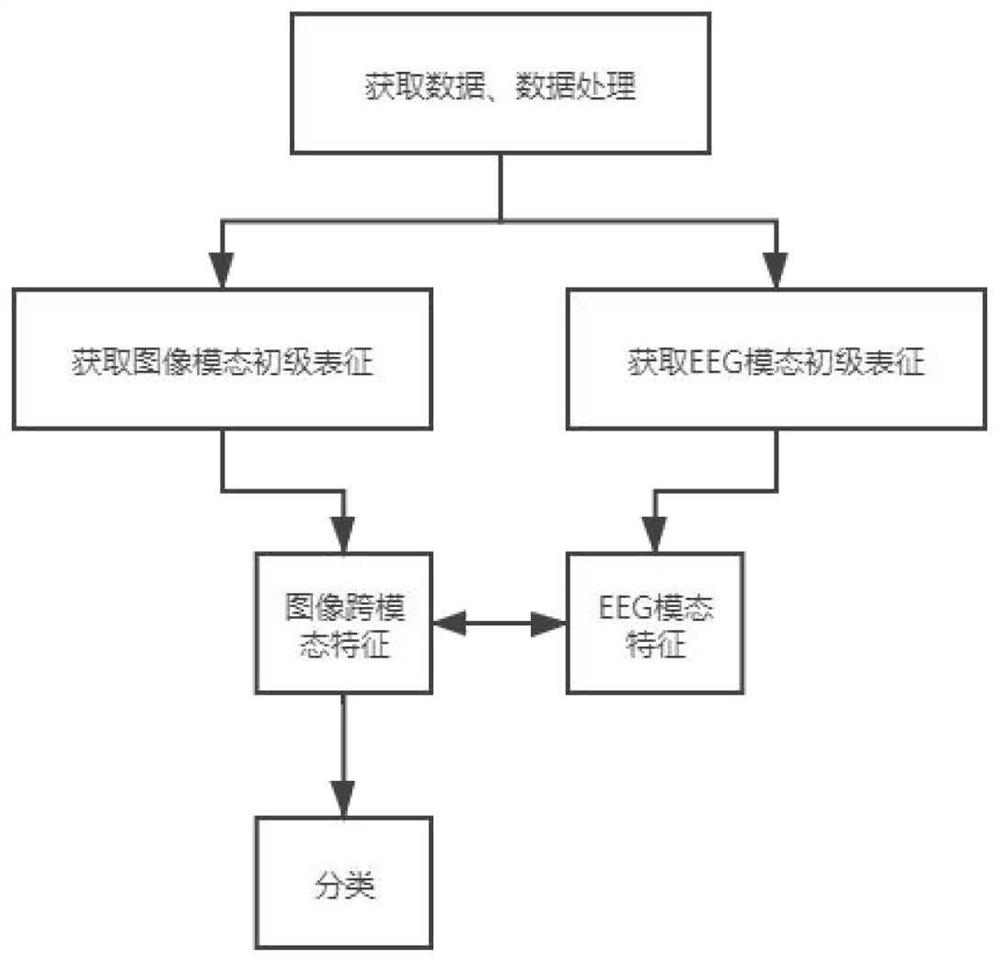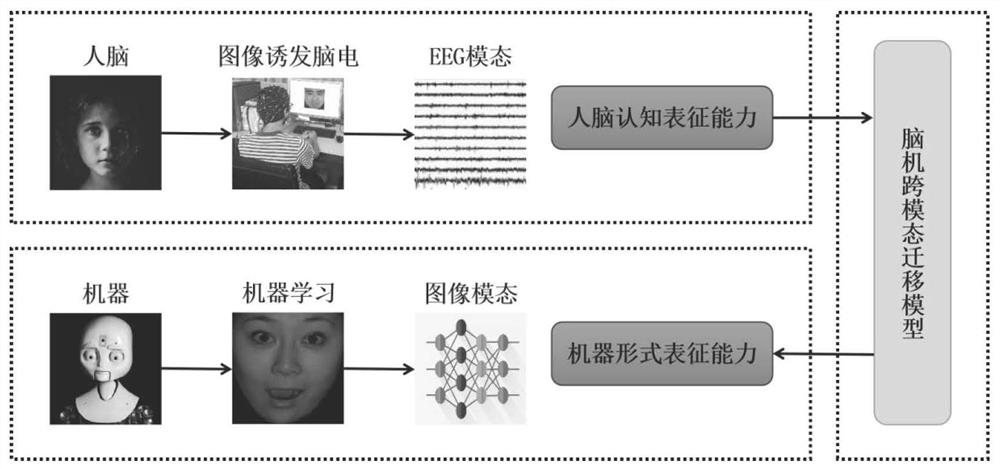Emotion recognition method based on brain-computer cross-modal migration
An emotion recognition, cross-modal technology, applied in character and pattern recognition, neural learning methods, computer parts, etc. Costs, Effects of Enhanced Emotional Learning
- Summary
- Abstract
- Description
- Claims
- Application Information
AI Technical Summary
Problems solved by technology
Method used
Image
Examples
Embodiment Construction
[0038] like figure 1 , 2 As shown in and 3, an emotion recognition method based on brain-computer cross-modal transfer, the specific process is as follows:
[0039] Step 1. Get data
[0040]All the facial emotion images involved in this experiment come from the Chinese Facial Affective Picture System (CFAPS). The emotion images in the system mainly include 7 types of basic expressions, and a total of 870 emotional face images were collected. Among them, 74 were angry, 47 were disgusted, 64 were fearful, 95 were sad, 120 were surprised, 222 were neutral, and 248 were happy.
[0041] In order to introduce human cognitive ability, image-induced EEG features are added on the basis of image recognition by traditional machines to obtain advanced emotional representation. Since the acquisition of EEG data requires the stimulation experiment of emotional images on the subjects, the experimental design is completed in E-pirme, and the images are displayed in order of categories, and...
PUM
 Login to View More
Login to View More Abstract
Description
Claims
Application Information
 Login to View More
Login to View More - R&D
- Intellectual Property
- Life Sciences
- Materials
- Tech Scout
- Unparalleled Data Quality
- Higher Quality Content
- 60% Fewer Hallucinations
Browse by: Latest US Patents, China's latest patents, Technical Efficacy Thesaurus, Application Domain, Technology Topic, Popular Technical Reports.
© 2025 PatSnap. All rights reserved.Legal|Privacy policy|Modern Slavery Act Transparency Statement|Sitemap|About US| Contact US: help@patsnap.com



